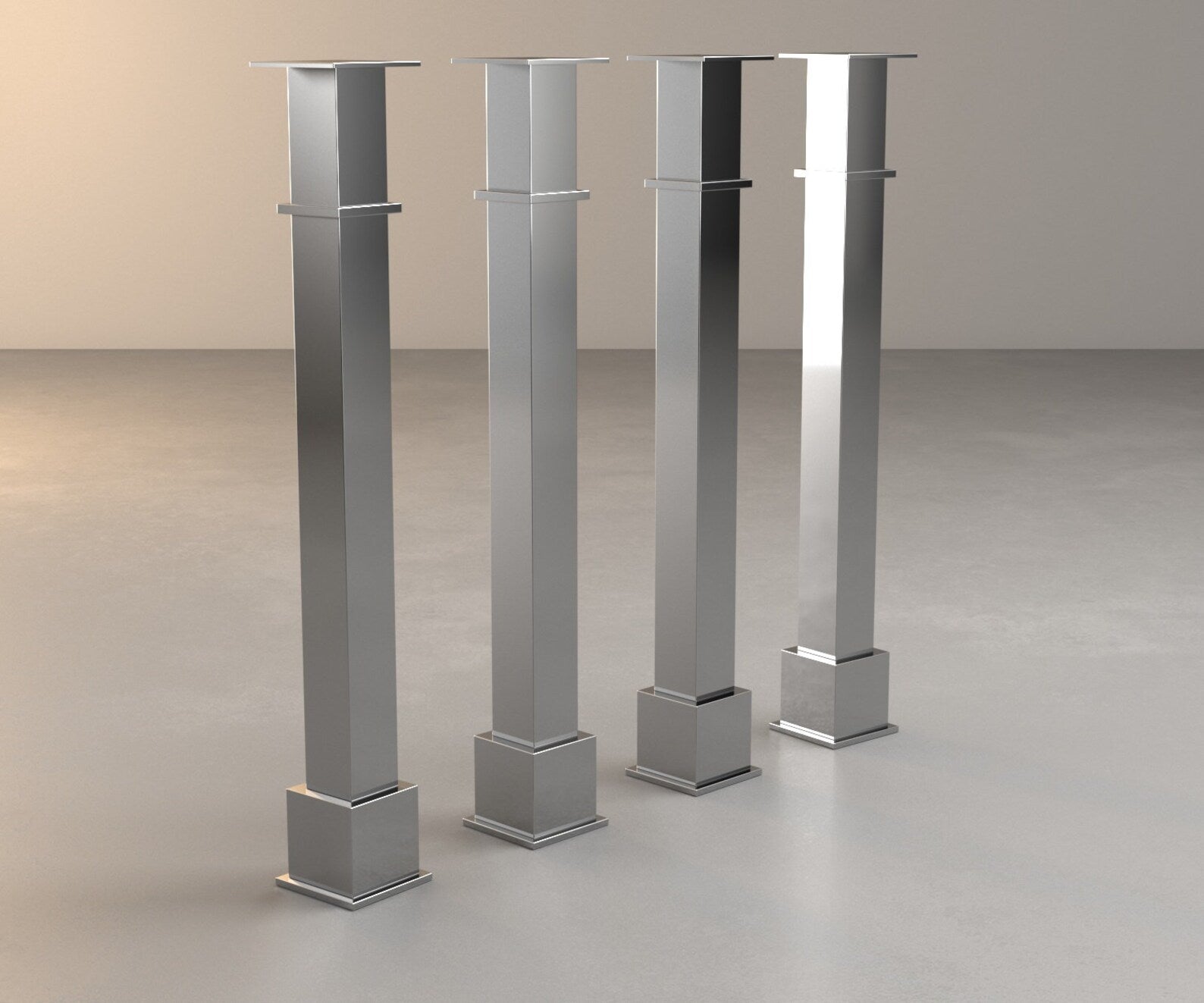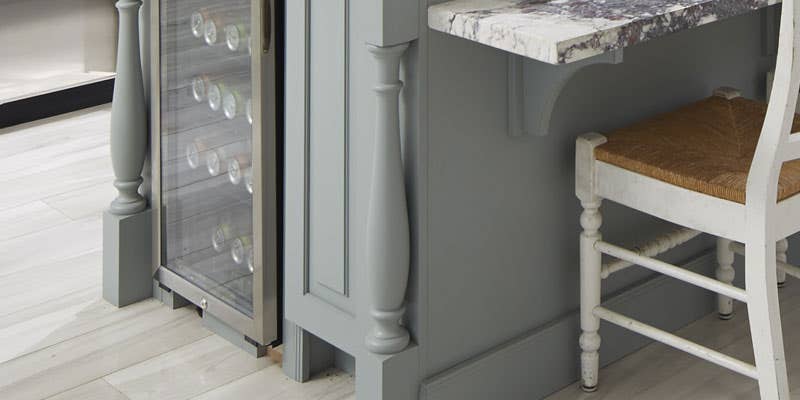Boost Your Area with Trendy Legs For Kitchen Island Designs
Boost Your Area with Trendy Legs For Kitchen Island Designs
Blog Article
Secret Considerations for Locating the Ideal Legs For Kitchen Area Island for Your Design
When selecting the ideal legs for your cooking area island, a number of key factors to consider enter into play that can considerably impact both capability and aesthetics. The selection of material, elevation, and style have to line up with your total kitchen area layout to make sure a harmonious appearance. Additionally, security and upkeep demands are essential for lasting use and convenience of care. Comprehending these factors can improve your kitchen's functionality and aesthetic appeal, yet the nuances of each consideration can often be ignored. What effects might these options carry your kitchen's general ambience?
Determine Your Style Preference
Identifying your design choice is crucial when choosing the suitable legs for your cooking area island. The legs of your kitchen area island not just offer a practical function however likewise add dramatically to the general aesthetic of the area. Determining your design style-- be it modern, rustic, traditional, or commercial-- is crucial.
For a contemporary kitchen area, take into consideration sleek, minimalistic legs that match clean lines and open spaces. Traditional cooking areas typically favor transformed or ornate legs, which can include a touch of beauty and sophistication.
Additionally, consider the height and proportion of the legs in connection to the island's surface area. Inevitably, your design preference will influence not only the choice of legs however likewise the general consistency of your cooking area's layout.
Pick the Right Product
Picking the right material for your kitchen island legs is critical in guaranteeing both toughness and visual allure. Numerous products use distinctive benefits, and the option commonly shows your style preferences and practical requirements.
Wood is a popular choice, providing heat and convenience. It can be tarnished or repainted to match your kitchen style, making it versatile to different styles, from rustic to contemporary. However, wood might need routine maintenance to preserve its look and honesty.

If you seek a special touch, take into consideration acrylic or glass materials. They can produce an impression of space and lightness in your cooking area, making them an outstanding option for smaller sized areas - Legs For Kitchen Island. Nonetheless, these choices might require careful handling and upkeep to stay clear of scrapes.
Eventually, the product you pick should align with your kitchen area's total layout, ensuring that the legs serve both ornamental and useful objectives.
Consider Height and Proportions
When developing a kitchen area island, elevation and percentages play a critical role in ensuring functionality and comfort. The basic height for a kitchen island generally ranges from 36 to 42 inches, aligning with conventional counter elevations or bar heights, respectively. This measurement is important for harmonizing with bordering counter tops and stools, making it possible for ease of usage throughout meal preparation and social interactions.
In addition, the island's percentages need to match the overall kitchen format. A well-proportioned island needs to not bewilder the space; instead, it must produce a balanced visual. Think about the ratio between the island's size and size, ensuring it gives ample check this area without crowding the kitchen. A basic guideline is to keep a size of 24 to 48 inches, helping with movement and access.
Furthermore, the elevation of the legs or base can influence the aesthetic appeal and capability. Taller legs may offer a more modern-day, airy feel, while much shorter ones can evoke a typical, grounded look. Ultimately, very carefully thinking about elevation and proportions will certainly cause a kitchen area island that is both aesthetically appealing and functionally effective, boosting the overall style of the room.
Assess Security and Sturdiness
A kitchen island's legs should not just enhance its height and percentages yet also offer appropriate security and resilience to sustain day-to-day activities. The legs are important to the general capability of the island, as they birth the weight of the counter top and any type of extra loads, such as devices or cooking jobs.
When examining security, it is crucial to think about the leg layout and material. Tough metal or solid wood legs typically offer premium strength compared to lighter materials like engineered wood or plastic. In addition, a bigger base can boost stability, lowering the danger of tipping or tottering during use.
Longevity is just as crucial; the legs must stand up to damage from daily usage. Take into consideration coatings that safeguard against scratches, damages, and dampness, specifically in a kitchen area environment. Examine the top quality of building and construction, such as fastenings and joints, which can dramatically impact the legs' lasting performance.
Eventually, buying well-crafted legs that focus on stability and toughness will certainly guarantee your cooking area island remains a reliable work area for several years ahead, boosting your cooking experiences while preserving aesthetic appeal.
Consider Upkeep and Treatment
Maintenance and care are vital factors to consider for making sure the durability and performance of kitchen area island legs. When picking legs, it is necessary to evaluate the materials made use of, as various alternatives need varying degrees of upkeep. As an example, wooden legs might call for periodic refinishing or securing to stop moisture damages and scratches, while metal legs Read Full Article may need regular polishing to keep their sparkle and avoid rust.
Furthermore, the finish put on the legs can affect upkeep demands. A high-gloss layer may be less complicated to tidy but can reveal finger prints and scrapes a lot more easily than a matte coating. It is suggested to select materials and finishes that enhance your way of living; for example, if you often host events, choose resilient materials that can stand up to damage.
In addition, think about the cleaning procedure associated with keeping these legs. Smooth surfaces usually require minimal initiative, while intricate styles may collect dirt and gunk, requiring even more labor-intensive cleaning methods. Legs For Kitchen Island. Inevitably, considering the maintenance and treatment required for your selected kitchen area island legs will not only improve their aesthetic appeal yet additionally ensure their practical stability over time
Verdict
In verdict, picking the ideal legs for a cooking area island requires careful consideration of numerous elements, including layout style, material choice, height, security, and upkeep. Each element plays a vital role in ensuring that the legs not just enhance the aesthetic charm of the kitchen area however likewise offer the essential assistance and sturdiness for day-to-day usage. A well-informed decision will inevitably add to a practical and aesthetically pleasing cooking area atmosphere.
The legs of your kitchen island not only useful content serve a practical function yet also add significantly to the overall visual of the room.Upkeep and treatment are crucial factors to consider for making certain the durability and efficiency of kitchen area island legs. Wood legs may need periodic refinishing or securing to prevent dampness damages and scrapes, while steel legs may need regular polishing to maintain their sparkle and avoid rust.
Ultimately, factoring in the maintenance and treatment needed for your chosen kitchen island legs will not only boost their aesthetic appeal yet additionally ensure their practical stability over time.

Report this page